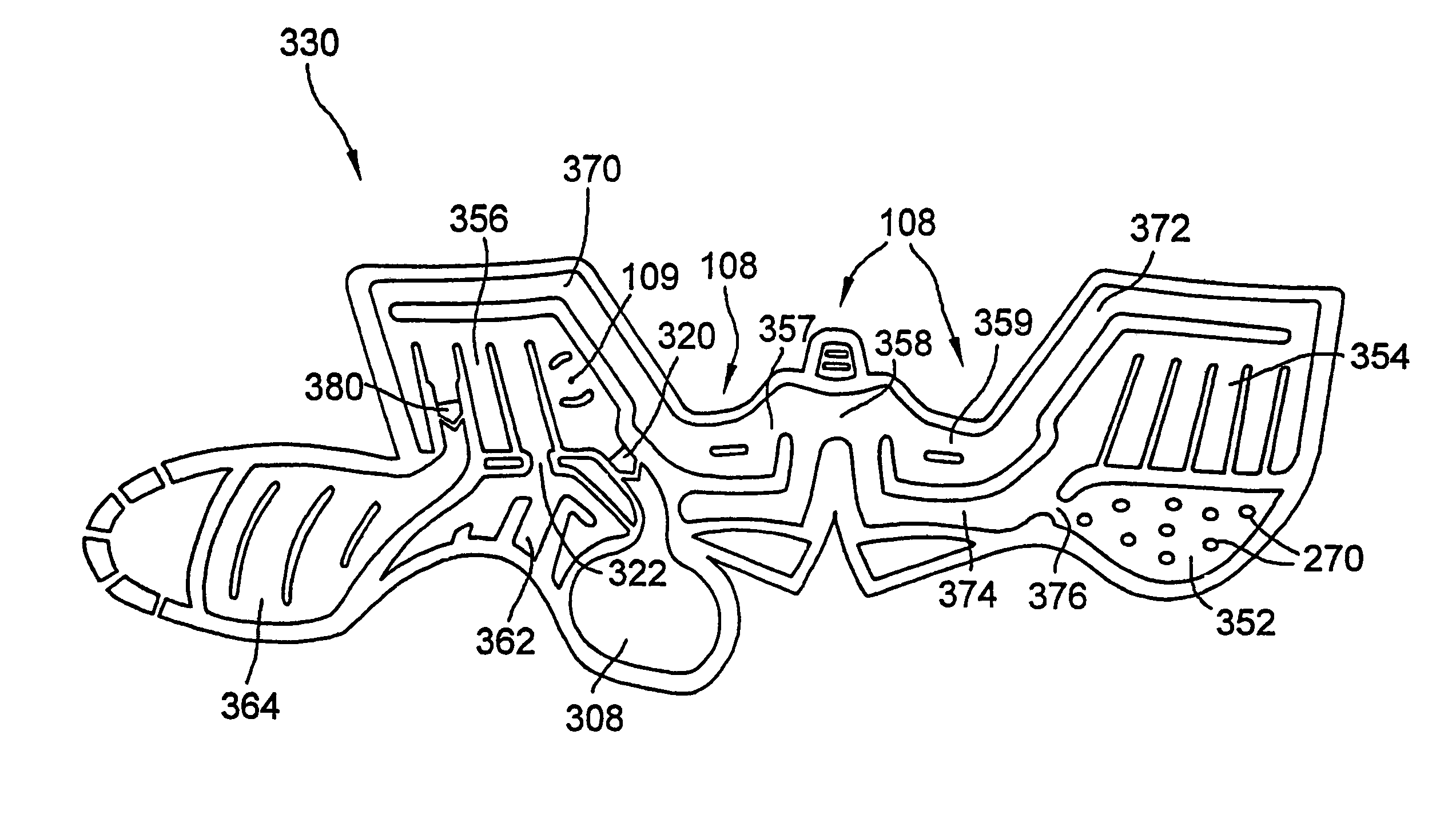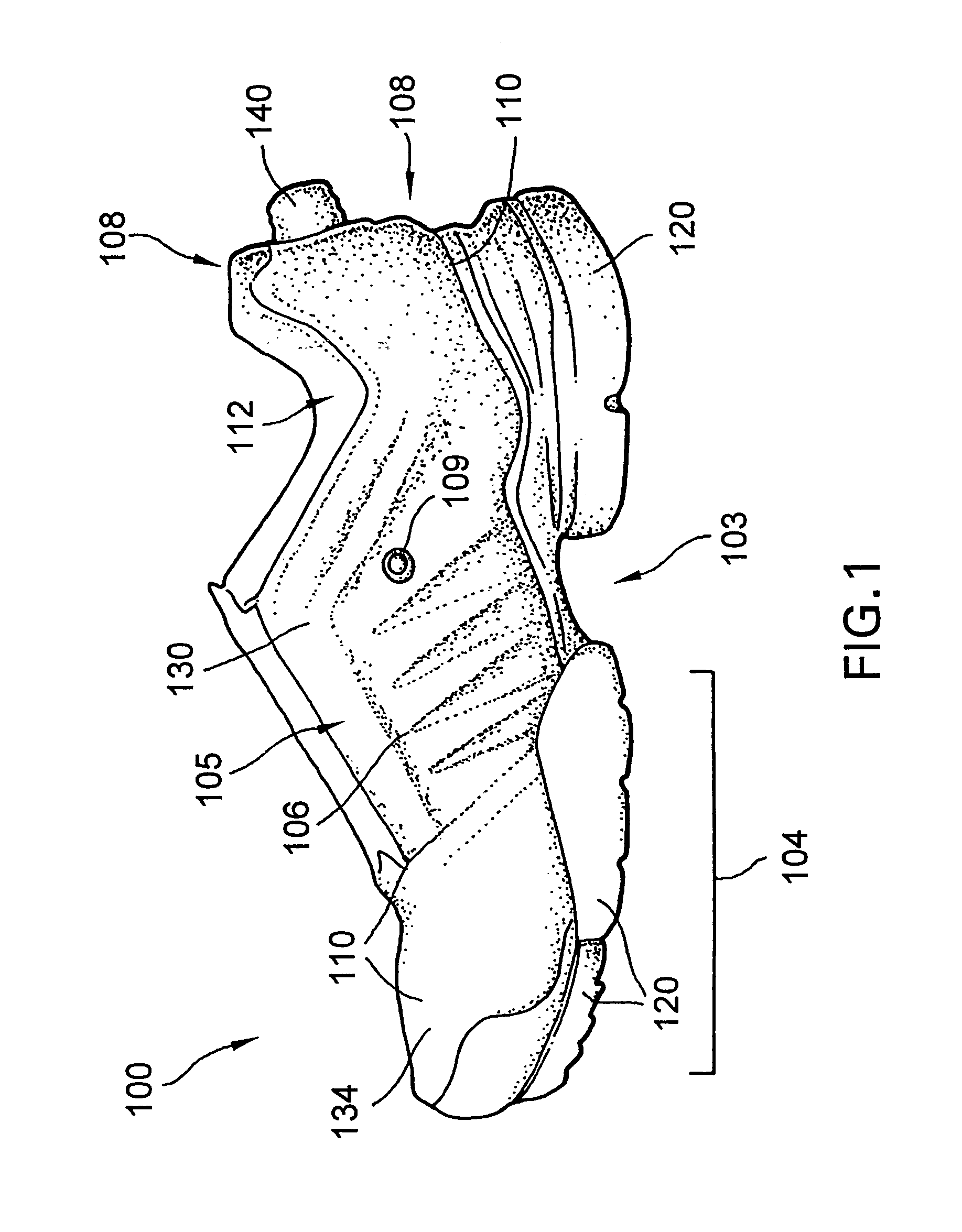Shoe having an inflatable bladder
a technology of inflatable bladder and shoe, which is applied in the field of athletic shoes, can solve the problems of difficult to wear shoes for prolonged periods of time, pressure on the instep of the foot, and similar length feet without the same geometry, and achieve the effect of reducing the amount of air
- Summary
- Abstract
- Description
- Claims
- Application Information
AI Technical Summary
Benefits of technology
Problems solved by technology
Method used
Image
Examples
Embodiment Construction
[0035]A preferred embodiment of the present invention is now described with reference to the Figures, in which like reference numerals are used to indicate identical or functionally similar elements. Also in the Figures, the left most digit of each reference numeral corresponds to the Figure in which the reference numeral first appears. While specific configurations and arrangements are discussed, it should be understood that this is done for illustrative purposes only. A person skilled in the relevant art will recognize that other configurations and arrangements can be used without departing from the spirit and scope of the invention. It will be apparent to a person skilled in the relevant art that this invention can also be employed in other applications.
[0036]A shoe for a right foot according to the present invention is shown generally at 100 in FIG. 1. A corresponding shoe for the left foot could be a mirror image of shoe 100 and therefore, is not shown or described herein. As s...
PUM
 Login to View More
Login to View More Abstract
Description
Claims
Application Information
 Login to View More
Login to View More - R&D
- Intellectual Property
- Life Sciences
- Materials
- Tech Scout
- Unparalleled Data Quality
- Higher Quality Content
- 60% Fewer Hallucinations
Browse by: Latest US Patents, China's latest patents, Technical Efficacy Thesaurus, Application Domain, Technology Topic, Popular Technical Reports.
© 2025 PatSnap. All rights reserved.Legal|Privacy policy|Modern Slavery Act Transparency Statement|Sitemap|About US| Contact US: help@patsnap.com



